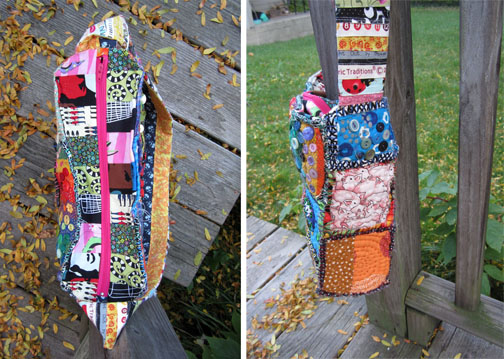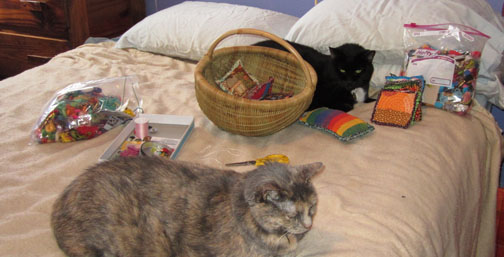When I made up my most recent batch of prints, I thought here's an opportunity to lay out my process for you. Although I made three prints, I'm just showing you the one I designed on the fly - the others were drawn earlier, and therefore were disqualified.
 |
| 1. sketching |
I bought some bird fabrics, to go with a few other bird fabrics I had lying around, then I thought, I must have a bird print. I've actually been messing with the idea for a few weeks, but failed to come up with a design I was happy with. The final design was actually a combination of the two taller birds here, but is not actually pictured.
I like to sketch in crayon, because it gives a nice thick line, which is important for doing screen prints the way I do... primitively. ;)
The final drawing was scanned and then messed about with in PhotoShop. The end product:
 |
| is quite a bit shorter than the original |
The trouble is that for many applications I can't employ a screen print much taller than 5", so when I got the bird the right width, it needed to be compressed to be a usable length. Thank goodness for PhotoShop!
Then the picture was printed out at the proper size, and made into a screen print using the method outlined in this
tutorial.
Once it was dry (over night is best!) I printed it (I use fabric paint - and a piece of cardboard on the inside to keep the paint from leaking onto the back) on a spare old onesie to check for mistakes:
 |
| blue! |
Then washed the screen and let it dry - I love the plastic hoops! I have some metal and wood ones, but the plastic ones are so great, because you can wash and dry them in the screen, and that is so much less messy.
 |
| and now we examine what we've printed |
At this stage, I like to compare the printed out picture with the printed picture. Some things, like the fuzziness of the feet, are just a printing error, and not a screen problem. But there are a few things I have to clean up here: the tail has a blotch in it, and there are a lot of loose speckles. These are pretty common with this method - my suspicion is that they come from putting fresh glue next to mostly dried glue, but who knows?
Once the screen has dried, a bit of pigment remains on it from the first printing, and this can be a great help in finding and fixing loose speckles. The rest - adjusting the thickness of lines, etc, is up to one's own particular desire.
Once I was satisfied, and left time for the screen to dry again, I could print the panels I needed for my projects (on hand dyed cloth, of course!).
 |
| (the fabric to the right is what I used to line both pouches) |
And... those panels went into these pouches.
























